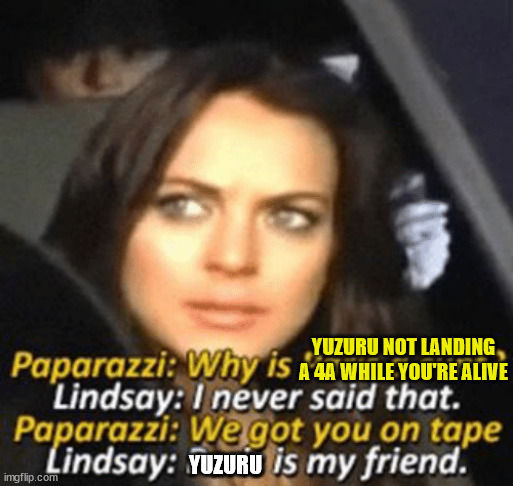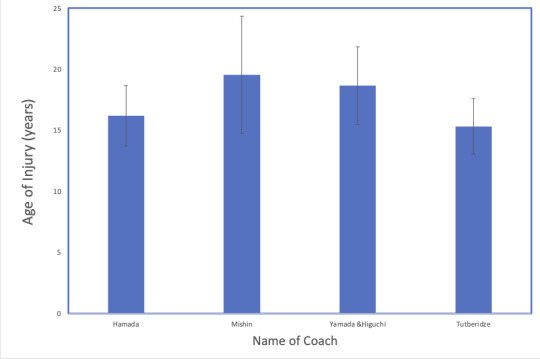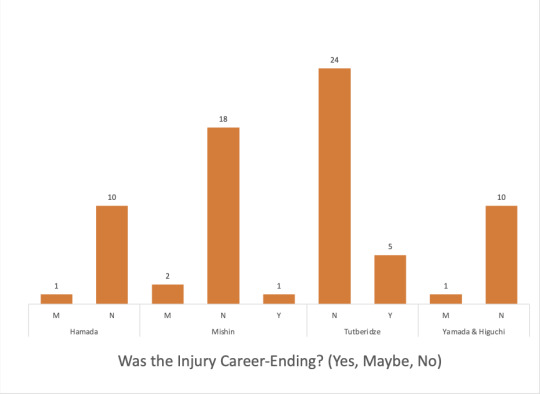#alexei mishin
Text
Alexei Mishin about Yuzuru's retirement
"This announcement didn't bring me joy. Hanyu left competitve sport, but stayed in my heart and my memory. Just like for millions of other people."
110 notes
·
View notes
Text
Grandpa Malinin is savage 💀

#we stan grandpa Malinin#ilia malinin#alexei mishin#eteri tutberidze#eteri#figure skating#fs#from coach to coach
11 notes
·
View notes
Text
Elizaveta is so right!! Keep showing rusfed that you don't have to be a teen girl to skate well!!!

#figure skating#russian figure skating#someone save those russian girls#elizaveta tuktamysheva#alexei mishin
18 notes
·
View notes
Text

On 3 December 1960, Korolev suffered his first heart attack. During his convalescence, it was also discovered that he was suffering from a kidney disorder. He was warned by the doctors that if he continued to work as intensely as he had, he would not live long. Korolev became convinced that Khrushchev was only interested in the space program for its propaganda value and feared that he would cancel it entirely if the Soviets started losing their leadership to the United States, so he continued to push himself.
In the mid-1960s, though, the Soviet Union's leadership had begun to shift away from the Stalin-era generation which had led the development and transfer of heavy industry during the Great Patriotic War, to younger officials which had helped to carry it out on the ground. More energetic, they favored increased attention to light industry and consumer goods in the post-war world. These new leaders like Podgorny, Kirilenko, and Kosygin also supported the continuation of the space program for the purpose of scientific progress and eventual human colonization of other worlds.
By then, Korolev's health problems were beginning to accumulate and he was suffering from numerous ailments. In 1964 doctors diagnosed him with cardiac arrhythmia. In February he spent ten days in the hospital after another heart attack. Shortly after he was suffering from inflammation of his gallbladder. The mounting pressure of his workload was also taking a heavy toll, and he was suffering from a lot of fatigue. On top of everything, he was experiencing hearing loss, possibly from repeated exposure to loud rocket-engine tests.
In December 1965, he was diagnosed with a bleeding tumor. He entered the hospital on 5 January 1966 for somewhat routine surgery, but died nine days later due to complications arising from his heart problems. Under Soviet policy for important state employees, the identity of Korolev was not made public until after his death in order to protect him from foreign agents. His obituary was published in the Pravda newspaper on 16 January 1966, showing a photograph of Korolev with all his medals, and his ashes were interred with state honors in the Kremlin Wall.
Korolev is often compared to the western Wernher von Braun as a leading architect of the Space Age. Like von Braun, Korolev had to compete continually with rivals, such as Chelomei and Glushko. Unlike the Americans, he also had to work with technology that in many aspects was less advanced than what was available in the United States, particularly in electronics and computers, and to cope with extreme political pressure. He led the program with a very autocratic style, and demanded the testing of fully-assembled rockets rather than ground experimentation on individual components.
Fortunately for the program, his deputy and right-hand man Vasily Mishin was appointed head of OKB-001 by Alexei Kosygin, who became general secretary that same year. Kosygin, who was working to diversify Soviet economic goals, was very interested in the N1's long-term potential to be an interplanetary launch vehicle. He worked to relieve pressure on the program to produce flight tests while increasing its funding.
Perhaps most importantly, he worked to control interdepartmental rivalry by organizing an executive board to unite the design bureaus under a cohesive plan. Under these conditions, the much less dictatorial Mishin and his team were able to conduct more rigorous ground testing with less waste than had occurred under Korolev's command, without the threat of being replaced. As a result, the N1 as well as the orbital and landing modules began to make serious progress, with a successful uncrewed flight in March, 1969.
The Soviet electronics industry experienced rapid new development going into the 1970s. By the end of the decade, the KORD computer control system had been fully implemented, along with successful high-yield vernier engines, fire control system, fuel pumps, cabling, and a new hyperefficient exhaust system. At the same time, OKB-586 was tasked with creating a lander light enough to be transported by the N1.
In the summer of 1969, as Apollo 11 made its journey to the moon, the rocket's existence was made public in order to demonstrate the USSR's commitment to continuing space exploration in spite of the US's victory. The chief engineers were fond of the early "N1" designation, so upon its announcement it was officially named the Naos 1 as a backronym, after the blue-supergiant star ζ Puppis.
The crewed missions testing life-support systems and the LOK were given the name Euclid after the ancient Greek geometer; a mortal counter to the divine Apollo. With the operation now public knowledge, they were to be numbered from there in simple succession. On 2 August, Naos 1 successfully launched the crew of Euclid 1 into orbit, while the USSR went public with programs for the exploration of Venus and the outer planets, as well as an eventual crewed operation on Mars. This created renewed enthusiasm in the public consciousness for space travel as a long-term venture of world governments.
Science fiction at this time inspired people to dream of human habitation and terraforming of other worlds. Inspired by the name of the program itself, the name of each segment of the operation would be themed on ancient mathematicians, representing space travel as part of a grand historical project of the human species.
The next spring, a series of new launches were scheduled in quick succession, making use of four of the nine N1-L3 units that had been completed. The first was a second orbital test with no crew, the second an insertion into Lunar orbit. The third was a second Lunar orbital mission with a crew to test the LOK. It was at this point that planners suggested a landing location in the far hemisphere in order to collect geological samples of the unique terrain there. The third crewed mission, Euclid 3, was to conduct the landing and was set to launch in late 1970.
It was eventually decided that the mission would land at a spot near the southern rim of the Mare Ingenii, near the mountain range separating it from the crater Obruchev. The one-person expedition was to attempt exploration of the area just north of the mountains, hoping to capture images of them. In October, 1970, the sixth launch of the Naos 1 rocket took place from the Baikonur Cosmodrome in Kazakhstan. The crew of two, A. Leonov and P. Belyayev, were some of the most experienced and decorated cosmonauts in the entire eastern bloc.
During the mission, they worked together with dizzying synergy, accomplishing phenomenally precise navigation and keeping all systems operational. They were allowed to work closely with the design teams in the later stages in order to ensure proper installation of valves and cables, and Kosygin made sure that their suggestions were implemented exactly with whatever financial resources were necessary.
Leonov would be the one to land on the moon itself and conduct EVA, and with the successful detatchment of the LK he and his colleague in radio communication guided the craft to the lunar surface very near to the assigned spot, and even closer to the mountains than had been planned. After exiting the vehicle, he took a famous self-portrait with large boulders and foothills in the background which illustrated the more varied terrain of the region.
He then ventured south towards the mountains, where he was able to crest a few lines of hills and obtain breathtaking views of the entire range, taking several experimental color photographs of rugged, sunlit peaks and fascinating rock formations. He was able to collect a substantial volume of invaluable samples which would be returned to earth and provide new insights into both the moon's geological past and the possibility of future alteration of its environment. At the end of the EVA, a Soviet flag was planted into the lunar regolith along with scientific instruments.
Several more expeditions to the moon were planned by the Soviet government as its economic situation improved in the early 1970s, while the stage was set for humanity's journey to Mars in that decade. The mission served to sustain human interest in cosmo-engineering and help our species embark on grand projects to expand our influence and habitation across the universe.
Following the Third World War (1972-1977), the Soviet Union, China, India, the SRJ, and the DPRK would cooperate to begin implementation of the Tranquil Abundance Project of Cosmo-Agriculture (TAPCA), the creation of the first subterranean lunar farms. These would export food and medicines back to earth, while rapidly generating a thick CO₂ atmosphere to help with further farming, to control radiation, and to melt ground-water. The first lunar lakes began to form by the turn of the XXII century, while at the same time the capture and harvest of comets had begun.
Translations:
Yevklid - Euclid
Arkhimed - Archimedes
Pifagor - Pythagoras
Eratosfen - Eratosthenes
Eridan - Eridanus
Mare Ingenii - Sea of Ingenuity
0 notes
Text
But nothing is funnier to me than Mishin saying (with certainty) to press that theres no way someone manages a 4A in his lifetime and then Yuzuru doing it a few days later on camera and Mishin being like 'no comment'


It's like he gotta had to digest it first before he was able to find his voice again lol

223 notes
·
View notes
Text
MISHIN WAS COACHING YUZU FOR HIS 4A???
This man outright told the media no one will land the 4A in his lifetime all the while coaching Yuzuru to land the QUAD AXEL??? What is he on 😭

Trans: “We have a little bit of Yuzuru Hanyu with us” (x)
202 notes
·
View notes
Text
Look at Mishin here and his gesture. Remember the interview he did during the Olympics? When he said he tried to dissuade Yuzu from doing the 4A? Here's one attempt.
(I mean, I could understand Mishin a little. Yuzu knows and Mishin knows that if he's gunning for a gold, he could have it, even if he finished 8th at the SP. He could change his layout, say from Axel to Loop, and win. But the thing is: Yuzuru's goal is beyond the gold this Olympics. His goal became that childhood dream he had: the 4Axel on Olympics stage.)
op
73 notes
·
View notes
Text
Mishin be like:

#HE REALLY SAID NO ONE IS GONNA LAND A QUAD AXEL IN HIS LIFETIME WHILE COACHING YUZU ON LANDING A QUAD AXEL#men's singles the only category worth watching figure skating for this season#yuzuru hanyu#alexei mishin#figure skating
60 notes
·
View notes
Text

So true
#figure skating#same mishin#same#liza my beloved#elizaveta tuktamysheva#rus nats 2021#alexei mishin#fs
78 notes
·
View notes
Text
Someone give Yuzu and Mishin an Oscar because they really had us sold on that 'enemies' charade
35 notes
·
View notes
Text
So I ran the injury data from @allekha 's post through excel



The blue one shows the average age of the skaters at the time of their injury, categorized by coach. Unsurprisingly, Tutberidze had the youngest on average, but the numbers are not statistically significant due to the vast differences in sample size for each coach (Tut had way more data than Hamada, for example). I also think Plushenko threw off the data for Mishin, since he retired way later than any other skater in the data and therefore had more injuries to report. I did not include eating disorders on here, simply because those can be hard to quantify and are not technically “injuries” (although they can cause or exacerbate them for sure).
The orange graph shows wether the injuries were career ending (Y is yes, M is maybe, and N is no). Both Russian camps had at least one career end, while the Japanese camps had only maybes at worst. This data is pretty subjective due to the multi-faceted nature of retirement, but I did my best.
The green graph shows the type of injuries. The vast majority were just reported as “(x body part) injury”, and thus categorized as “unknown”. Breaks and fractures were considered functionally the same thing in this data.
I think this is pretty interesting to see. Obviously, there was no data from Orser and Lambiel has not been a coach for long enough to really have a record, but that would have been nice to work with as well were it available. Let me know your thoughts or if you have any questions!
Find the original post from @allekha here!
#figure skating#eteri tutberidze#alexei mishin#mie hamada#tw: injury#statistics#I just finished an excel course so this was basically screaming at me to be made lmao
23 notes
·
View notes
Text
Yes!!! Slay, my empress!!!

#figure skating#russian figure skating#elizaveta tuktamysheva#quads#female figure skater#alexei mishin
12 notes
·
View notes
Text

Nobody is doing it like them
97 notes
·
View notes
Text
when mishin called yuzu a heavenly being, i felt that 🥺
34 notes
·
View notes
Photo

Team 😐 😐
36 notes
·
View notes
Text

🔥 TEAM RUSSIA vs TEAM ITALY. 0-1. 🔥
#figure skating#gold medal#figure skater#free program#short program#pattinaggioartistico#pattinaggiosulghiaccio#figureskatingedit#team russia#evgeni plushenko#angels of plushenko#team plushenko#eteri tutberidze#team tutberidze#alexandra trusova#anna scherbakova#elizaveta tuktamysheva#alexei mishin#figureskaters#patinage#daniel grassl#matteo rizzo#team italy#team cricket club#worlds 2021#stockholm 2021#world championships#isu figure skating#figure skating memes#clownisu
23 notes
·
View notes